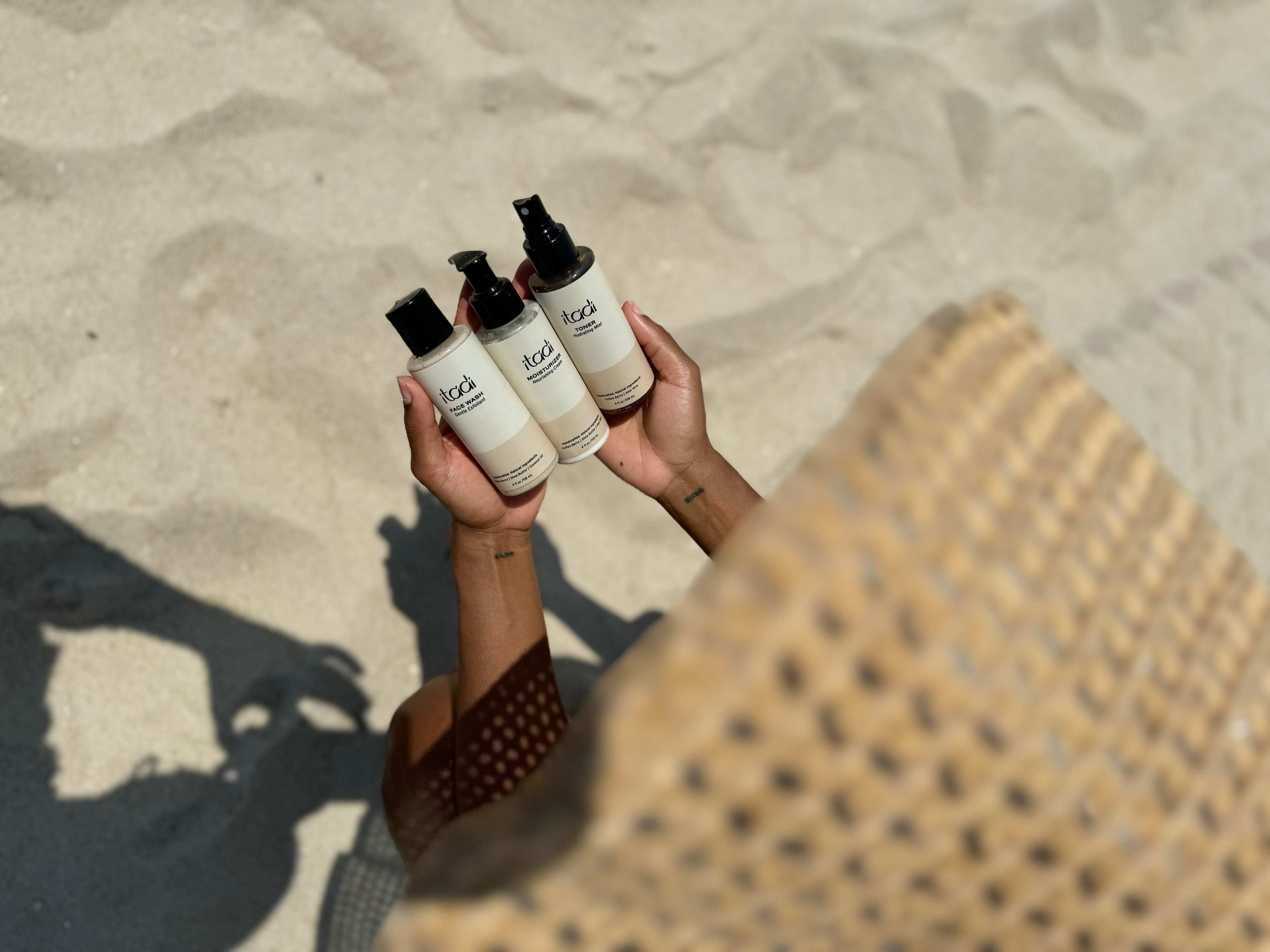Welcome to the Itadi Body blog! While your morning routine is all about protection against the day's environmental stressors, your nighttime routine is focused on repair and renewal. Think of it as your skin's time to clock in for its night shift! Understanding this shift is the key to unlocking healthier, more radiant skin. Let's explore why your evening ritual is so important and the simple steps to make the most of it.
Why Nighttime is Crucial for Your Skin
When you sleep, your skin enters a reparative phase. This is when your body works to undo the damage caused by UV rays, pollution, and makeup from the day [1].
•Enhanced Absorption: Without environmental stressors like the sun and pollution, your skin is more receptive to potent treatment ingredients [1].
•Cell Regeneration: Your skin's cell turnover rate is higher at night, meaning new skin cells are produced faster [1].
•Collagen Production: The body works to rebuild collagen, which helps to minimize fine lines and wrinkles [1].
•Hydration: Your skin can lose moisture while you sleep, making a good night cream essential to lock in hydration and support the skin barrier.
Your Simple Nighttime Skincare Routine
A good evening routine doesn't have to be complicated. Here are the essential steps recommended by dermatologists, tailored for beginners:
Step 1: Double Cleanse (The Non-Negotiable)
This is the most important step of your evening routine. A single cleanse is often not enough to remove all the makeup, sunscreen, oil, and pollution that have built up throughout the day.
•First Cleanse (Oil-Based): Use a cleansing balm or micellar water to break down and dissolve oil-based impurities like makeup and sunscreen. Massage gently onto dry skin, then rinse [1].
•Second Cleanse (Water-Based): Follow up with a gentle, non-foaming cleanser to wash away any remaining residue and truly cleanse your skin. Choose a hydrating formula if you have dry skin, or a gentle foaming one if you are oily or acne-prone [1].
Step 2: Targeted Treatment (The Powerhouse)
This step is where you apply products with active ingredients to address your specific skin concerns, such as:
•Serums: Look for ingredients like Retinoids (for anti-aging and acne) or Hyaluronic Acid (for deep hydration).
•Spot Treatments: Apply these directly to any active breakouts.
Pro Tip: If you're using a potent active ingredient like a retinoid, let your skin dry completely for about 20 minutes after cleansing before applying the treatment. This helps minimize potential irritation. You can also skip this step on some nights to give your skin a break [1].
Step 3: Eye Cream (The Delicate Area)
The skin around your eyes is thinner and more delicate, making it prone to showing the first signs of aging.
•Application: Gently dab a small amount of eye cream around the orbital bone using your ring finger. Look for formulas with peptides to boost hydration and firm the skin [1].
Step 4: Moisturize (The Seal)
Every skin type, including oily skin, needs a night moisturizer. This step is crucial for sealing in all the active ingredients and supporting your skin's natural barrier while you sleep.
•Choose Wisely: Opt for a skin barrier–repairing moisturizer that is hydrating but won't clog your pores. If you have oily skin, choose an oil-free formula [1].
•Optional Occlusive: If you have very dry skin, you can finish with a light layer of face oil or an occlusive balm to trap moisture in, but this is not recommended for acne-prone skin or over retinoids [1].
The Takeaway
Your nighttime skincare routine is an investment in your skin's long-term health. By dedicating a few extra minutes each evening to cleansing and applying targeted treatments, you are giving your skin the best chance to repair, regenerate, and wake up looking its best.



0 comments